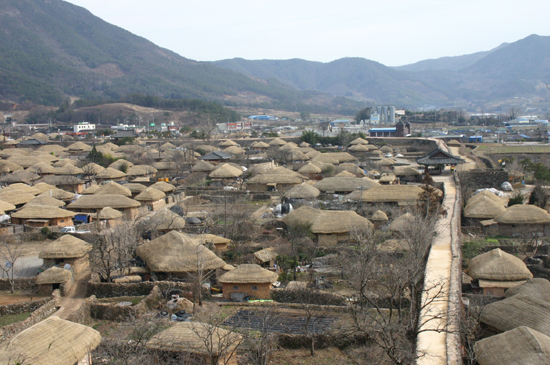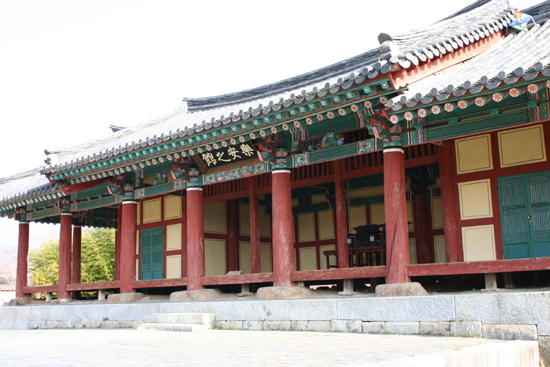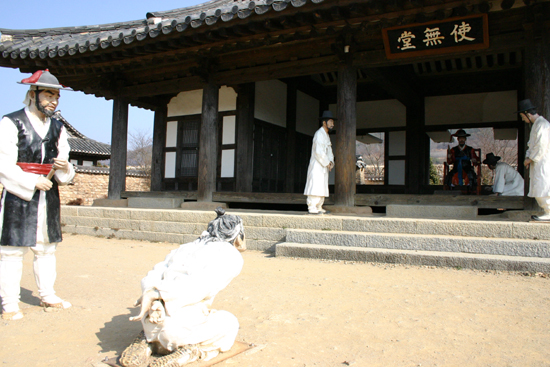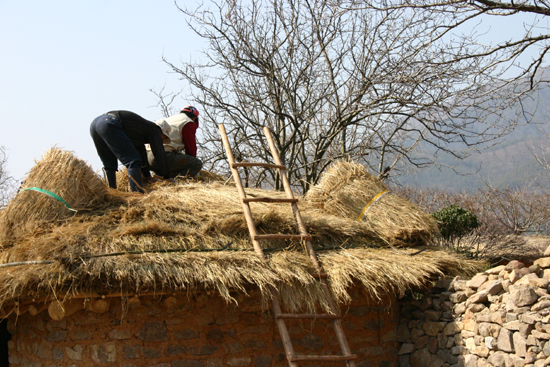<#275 The Road to Namdo>
Have you ever heard of Naganeupseong? Most fortresses are generally built on mountains or along coastlines, but Naganeupseong is a town fortress constructed on the wide Nagan plain. Inside and out of the fortress several villages of many private houses and local government buildings are located.

Ordinary people are currently living in traditional residences such as thatched houses. If you visited Naganeupseong, you might feel like you’ve been transported back to the Joseon Dynasty period. Looking at its history, you can understand why the fortress was established on the plain. Let’s take a look around this town fortress with a Tribune reporter.
It was still February, but was warm like Spring. It seemed that the winter had started to go away. Even though I went to the town fortress alone, the warm sun made the trip not so bad. After having changed bus twice, I got to Naganeupseong at Naganmyeon, Suncheon thanks to the kind directions of the second bus driver.
Maybe it was the good weather, but so many people as well as myself seemed to be here with their families to celebrate lunar New Year’s Day.
After crossing Heaja, the moat, a special facility to increase the defensive capacities of the fortress by using an artificially dug trench around it, in front of me appeared many ancient houses and buildings. Here, I was momentarily under the illusion that I was in the Joseon era.
At that time, the region was one of much plentiful in Jeollado, so Japanese pirates frequently invaded during the reign of King Taejo in order to plunder villages.
So a General of Nagan, Lim Kyeong-up established the fortress to defend villages against attack. The fortress of Naganeupseong is 1,410 meters in perimeter and has three gates connecting the town on the east, west and south sides.

Since the fortress was built surrounding a village, it was lower than I had thought. Inside the fortress, there were several government offices and many well-preserved houses, the majority of which were private houses.
The first place that I visited was General Lim Kyeong-up’s monument. This was built on April 1 in 1628 by the Nagan villagers.
General Lim ruled well over the subjects of Nagan, as local governor in 1626 and showed his bravery in many battles during the Manchu War of 1627. His memorial ceremony has been held annually on the 15th day of the lunar New Year.
Near by the memorial pavilion, were traditional swings. Two children were on a swing with their parents. I wanted to have a go but turned my steps instead to Gaeksa, constructed by a magistrate named Lee In in 1450.
This building is a traditional Korean official guest house in which King’s envoys or special guests were received and housed. On the first and fifteenth day of the lunar month every year, all the officials including the magistrate used to convene here and bow in the direction of the King’s palace in Seoul.
Looking at this building I thought the authority of the king was so powerful and liege homage so great in the Joseon years.
Next to Gaeksa, there was Dongheon, a traditional Korean government building where the local governor and army or navy commanding officers took office and conducted most of their local administrative and judicial affairs.

At the entrance of Dongheon, model policemen were standing, and inside, was the representation of an old law court in which a magistrate interrogated criminals. It was very realistic. At the other side of Dongheon, a certain colorful wooden structure attracted me.
It was Nakminru, a traditional Korean arbor which the Nagan governor named Min Joong-heun constructed during the reign of King Heon-jong from1834-1849. Nakminru is well known, together with Gwanghanru in Namwon and Yunjaru in Suncheon as a great place in the Honam area.
Heading toward the west gate, I saw many dwellings consisting of two or three thatched cottages, a yard and a vegetable garden. The cottages generally had three rooms, storage facilities and a latrine.
At the west gate I saw the last thatched cottage, Kim So-a’s house. This house, believed to have been built in the mid-19th century has the only Ondol, Korean under-floor heating system of all the houses of the Naganeupseong Folk Village.
Preserving the characteristics of traditional Korean houses in the village, the eaves of this house are quite narrow with extended rafters. Now run to provide tourists with bed and meals, I thought that if I were here again, I would stay in this house.
By the side of the west gate I walked a road toward the upper floor of the fortress from which I could see the whole Naganeupseong site. Behind Nganeupseong are gentle mountains and in front expansive fertile plains. The village clustered with thatched houses and official buildings looked very peaceful.

These days various artists live in the Naganeupseong Folk Village such as a natural dyer, a ceramicist, a woodcraftsman, a Korean classical musician, and a Korean paper artist. Preserving Korean traditional culture, Naganeupseong is a valuable cultural heritage, not only for Jeollado, Korea but also for all mankind.
Naganeupseong was designated as Historical Site No. 302 in Korea on June 14, 1983, and restored from 1984 on for 4 years. In October 2002, Naganeupseong Folk Village was registered on UNECO’s World Cultural Heritage tentative list.
The World Heritage Committee is currently evaluating its outstanding universal value and will decide whether it should be registered on the World Heritage list as a Historical village or not this March.
<History of Naganeupseong>
- When Japanese pirates intruded into Nagan in the 6th year (1397) of King Taejo of the Joseon Dynasty, a General Kim Bin-gil who governed Nagan raised an army against the pirates and built an earthen fortress and drove them away.
- In 1626~1628, during the reign of King Injo, a General Lim Kyong-up reinforced the wall of the fortress with stone.
- On June 14, 1983, Naganeupseong was designated as Historical Site No. 302 for the first time in Korea and restored from 1984 on for 4 years.
- In October 2002, Naganeupseong Folk Village was registered as an item on the tentative list of UNECO’s World Cultural Heritage.

